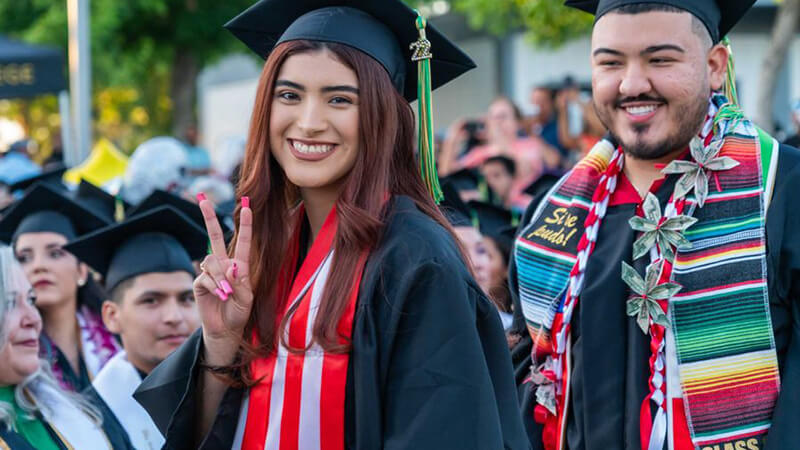More than 40 million people in this country have attended college but stopped before completing a degree, and I can understand why.
In higher education, they are known as “some college, no credential” students, and their numbers have grown by more than a million in the last year, according to a new report from the National Student Clearinghouse Research Center.
There are many reasons why people leave school without completing. Some students are the first in their families to attend college. They may not understand the culture or may lack support from home. I felt a little of that in my own experience as a first-generation student. My immigrant parents were determined that my brothers and I would get our degrees even though they had no postsecondary experience of their own. They did know that it opened doors—as it did for me when I graduated from Bates College in Maine.
Whether they are first-generation students, have pressing family responsibilities, or face any of the myriad other social, economic or other hurdles confronting students today, we know quite a bit about what helps people finish their degrees, including “student supports”—the practice of schools offering everything from extra advising to food pantries and childcare.
The extra attention given to me at a small liberal arts college is similar to what others have found when administrators find ways to build community and help people as individuals. Among the places where this is happening is Madera Community College near Fresno, Calif., which is bucking the national plunge in college enrollment, especially at community colleges.
Would-be students are concerned about debt, and in a tight labor market many can get decent work—for now—without a degree. So nationally, enrollment has fallen more than 11 percent since 2000, triggering a sense of crisis in higher ed. Some projections show a drop of as much as 15 percent between 2026 and 2037.
Especially hard hit are community colleges, where enrollment fell by 850,000 students from 2019-21, according to the Community College Research Center at Columbia University.
The declines were highest among Native American students, 15 percent; and Black students, 14 percent. The decline was 13 percent among white students and 12 percent among Hispanic students.
But enrollment at Madera has increased the past four years, up 19 percent to 8,593 last year—the only community college in its district to grow during the pandemic.
Angel Reyna, the school’s president, says Madera succeeds by putting students’ needs first.
“It’s who we are as an institution that we center our students in the work that we do,” he says. “But more importantly, what we want to do is focus on their success. We make them feel welcome and (foster) their sense of belonging.”
Reyna speaks from experience about the need for inclusion. Born in Mexico, he grew up in Washington state, working on farms in the Yakima Valley. Madera hired him in 2019.
“Having a shared, lived experience with the students that you serve goes a long way,” he says.
Madera, California’s newest community college, is surrounded by vast farm fields in the heart of the Central Valley. Nearly 70 percent of its students are Hispanic or Latino, and the school promotes “sentido de pertenencia”—a sense of belonging, reflected in a multicultural center, community events, campus artwork, and a focus on older students.
In fact, 37 percent of college students nationally are 25 or older. Unlike earlier generations—and contrary to commonly held perceptions—most of today’s students work, many of them full time.
Madera and other schools are trying hard to remove red tape and other obstacles, trying to give students the help they need to stay in school.
“Some of our students succeed in spite of us, and I’ve shared that,” Reyna says.
“They’re here with so many obstacles they’ve overcome, and they’re still at our door. They’ve gotten this far because they’ve been resilient. Now it’s incumbent upon us to take them to the next level, or quite frankly get out of their way—because they know what they’re doing.”
At last year’s Madera commencement, student speaker Dominique Medina talked about what it took to finish her degree through the pandemic years.
“It took a long time to get here. We studied through hardships,” she said.
“This is for the students like myself, who struggled a little bit but still showed up.”
More students can do it, but we have to help. When students complete their education and get the high-quality credentials needed in today’s workplaces, that’s great for them—and the rest of us, as well.
This article was originally published in Forbes.
